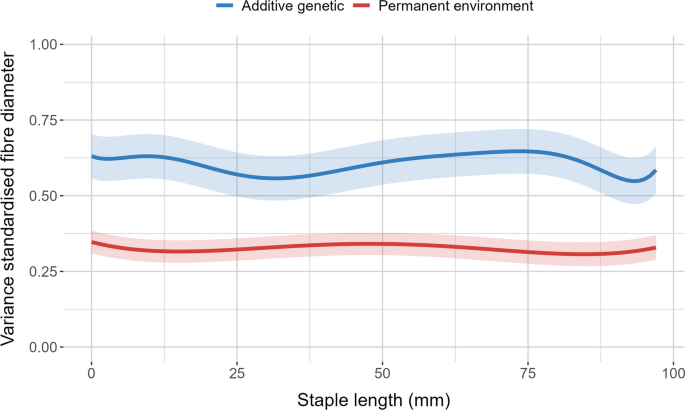Discover the Top Optical Fibre Diameter Analyser for Your Business
Discover the Top Optical Fibre Diameter Analyser for Your Business
Blog Article
Maximize Your Fiber Optic Efficiency: Comprehending Optical Fibre Diameter Analyser Modern Technology
The performance of fibre optic systems is critically influenced by the accuracy of their diameter, a variable often overlooked in the pursuit of optimum signal honesty. Comprehending the technology behind optical fibre size analysers discloses the elaborate balance in between measurement precision and manufacturing top quality.
Relevance of Optical Fiber Size
The size of optical fibre plays an essential duty in identifying the performance and effectiveness of interaction systems. It affects a number of essential specifications, including the setting of light breeding, depletion, and data transfer capability. Bigger sizes commonly permit multiple light modes, assisting in greater information transmission rates. Alternatively, smaller sized sizes tend to support less modes, which can boost signal clearness and decrease crosstalk.
Furthermore, comprehending the size's implications can cause set you back savings by decreasing the demand for signal boosting and repeaters in considerable networks (optical fibre diameter analyser). In conclusion, the importance of optical fiber size can not be overstated, as it straight impacts the overall efficiency and dependability of modern-day communication systems

Just How Diameter Influences Signal Quality
Signal top quality in optical fiber systems pivots significantly on the size of the fiber. The diameter affects several vital criteria, including depletion, bandwidth, and modal dispersion. A smaller sized diameter can bring about higher attenuation prices, causing signal loss as light travels with the fiber. This depletion can compromise the stability of the transmitted information, leading to a decline in signal high quality, specifically over fars away.
Conversely, bigger diameters usually enable boosted light capture and reduced modal diffusion, boosting signal clearness. In multimode fibers, a larger core size can sustain numerous light settings, but it might likewise present intermodal dispersion, which can weaken signal high quality. Picking the optimal fibre size is essential for accomplishing the wanted performance in certain applications.
Additionally, the interaction in between the fiber diameter and the wavelength of the light made use of plays a crucial function in determining the reliable transmission distance and total signal stability. As such, understanding how fibre diameter impacts signal quality is vital for network developers and designers making every effort to optimize optical fibre systems for reliable, high-speed information transmission.
Review of Size Analyser Technology
In numerous optical fiber manufacturing processes, exact dimension of fibre diameter is vital for ensuring regular efficiency and quality (optical fibre diameter analyser). Diameter analysers are sophisticated instruments made to analyze the physical measurements of optical fibres with high precision. They employ advanced optical and laser modern technologies to measure the diameter, ovality, and concentricity of the fibre, thus giving essential information for quality control
These analysers can operate in-line throughout the production process or as part of off-line screening procedures. In-line systems enable real-time tracking, enabling suppliers learn this here now to readjust criteria immediately, consequently maintaining ideal production problems. Off-line analysers, on the other hand, provide detailed examinations of batches, guaranteeing that any deviations from specified resistances are recognized and resolved.
Diameter analysers significantly add to the reduction of problems in optical fibres, enhancing total item integrity. By constantly determining essential parameters, these modern technologies help with compliance with sector standards and specifications. As the demand for high-performance optical fibers proceeds to climb, the function of size analysers comes to be significantly vital in achieving the desired high quality and efficiency standards in fibre optic systems.
Key Attributes of Fibre Diameter Analysers
Although various models of fibre size analysers exist, they frequently share numerous key functions that enhance their performance and reliability. Among the most significant functions is high-resolution dimension abilities, which make certain exact size readings, vital for maintaining high quality control in fibre manufacturing. In addition, several analysers integrate sophisticated optical sensing units designed to detect minute variants in fiber diameter, therefore supplying vital data for procedure optimization.
Another essential attribute is real-time monitoring, allowing operators to obtain prompt responses on fibre size throughout the manufacturing procedure (optical fibre diameter analyser). This capability assists in rapid changes and decreases the probability of issues. Several analysers additionally come outfitted with user-friendly user interfaces, allowing drivers to conveniently navigate through data and settings results
In addition, robust data storage and analysis performances are vital for tracking historical performance patterns and guaranteeing more information compliance with industry criteria. Some versions even use connectivity alternatives for integration into existing production control systems, enhancing overall functional efficiency. Last but not least, compact and portable layouts enable flexible implementation within manufacturing settings, making certain that high quality assurance procedures are smooth and reliable. These attributes collectively contribute to the effectiveness of fibre diameter analysers in optimizing fiber optic efficiency.
Ideal Practices for Fibre Optimization

First, routine calibration of optical fiber size analysers is necessary. This makes certain precise measurements and lessens potential disparities that can affect efficiency. Next off, maintaining a tidy workplace is crucial; dirt and contaminants can bring about indicate deterioration.
Furthermore, it is very important to pick fibers that meet particular application requirements. This involves examining aspects such as attenuation, transmission capacity, and ecological conditions. Correct setup methods should also be followed, including avoiding sharp bends and excessive tension, which can jeopardize fibre stability.
In addition, employing advanced tracking systems can assist in real-time efficiency evaluations, allowing prompt identification of problems. Regular screening and upkeep should be performed to make sure that fibers remain within optimal functional specifications.
Lastly, training personnel on the most up to date fibre optimization innovations and approaches will enhance their capacity to apply effective strategies. By complying with these ideal practices, companies can significantly enhance the efficiency and life expectancy of their optical fibre systems, making certain reliable interaction and information transfer.
Verdict
In conclusion, the assimilation of optical fiber diameter analyser innovation is crucial for optimizing fibre optic performance. By making certain exact dimensions of fiber measurements, these analysers dramatically boost signal high quality and useful content reduce losses during information transmission.
Signal quality in optical fiber systems pivots considerably on the diameter of the fiber.In many optical fiber manufacturing procedures, precise measurement of fiber diameter is essential for ensuring constant performance and high quality. As the need for high-performance optical fibres continues to climb, the duty of size analysers comes to be increasingly important in achieving the preferred high quality and efficiency requirements in fiber optic systems.
These features jointly add to the efficiency of fibre size analysers in optimizing fibre optic performance.
In conclusion, the integration of optical fiber diameter analyser innovation is vital for making best use of fiber optic performance.
Report this page